Predictive lead scoring: Best practices for B2C lead scoring using machine learning
Understand how predictive lead scoring works and what's required to build effective B2C lead scoring models using machine learning.


B2C companies operate in highly competitive markets, where customer acquisition and retention are vital for sustainable growth. Nowadays, it can be extremely difficult for brands to acquire customers while maintaining healthy customer acquisition costs.
Successful B2C companies are investing heavily in modern data and machine learning solutions, like predictive lead scoring, to drive efficiencies and improve outcomes across their customer acquisition, engagement, and retention programs.
If you are just starting to learn about predictive lead scoring or evaluating solutions for your B2C business, this article is for you. Here’s what you’ll learn:
- What is predictive lead scoring?
- How B2C companies use predictive lead scoring
- Core components of predictive lead scoring for B2C
- Fundamentals of a good B2C lead scoring dataset
- How to implement predictive lead scoring using Faraday
What is predictive lead scoring?
Lead scoring is a data-driven method of assessing and prioritizing leads based on their potential to convert into paying customers, and it’s a critical component of several B2C marketing and sales organizations. Simply put, leads with higher scores are considered more likely to convert, allowing sales and marketing teams to focus their attention on the right leads.
Traditional B2C lead scoring models often rely on a point-based system where humans determine the lead scoring criteria—typically a combination of basic demographic information and online behaviors such as pageviews, email engagement, or form submissions—and assign points to leads when they meet it.
While these point-based lead scoring models can help marketing and sales teams prioritize their efforts, they come with significant drawbacks. Lead scoring criteria are often arbitrarily decided, resulting in lead scores that may not accurately reflect a lead's true potential. Additionally, because they rely heavily on first-party engagement data, lead scores often end up being a lagging indicator of a lead’s conversion likelihood.
Predictive lead scoring leverages the power of machine learning to analyze historical lead data and build statistical models that can predict the likelihood of a lead becoming a customer. By analyzing much larger datasets, machine learning algorithms identify patterns and important features that contribute to a lead's likelihood of conversion.
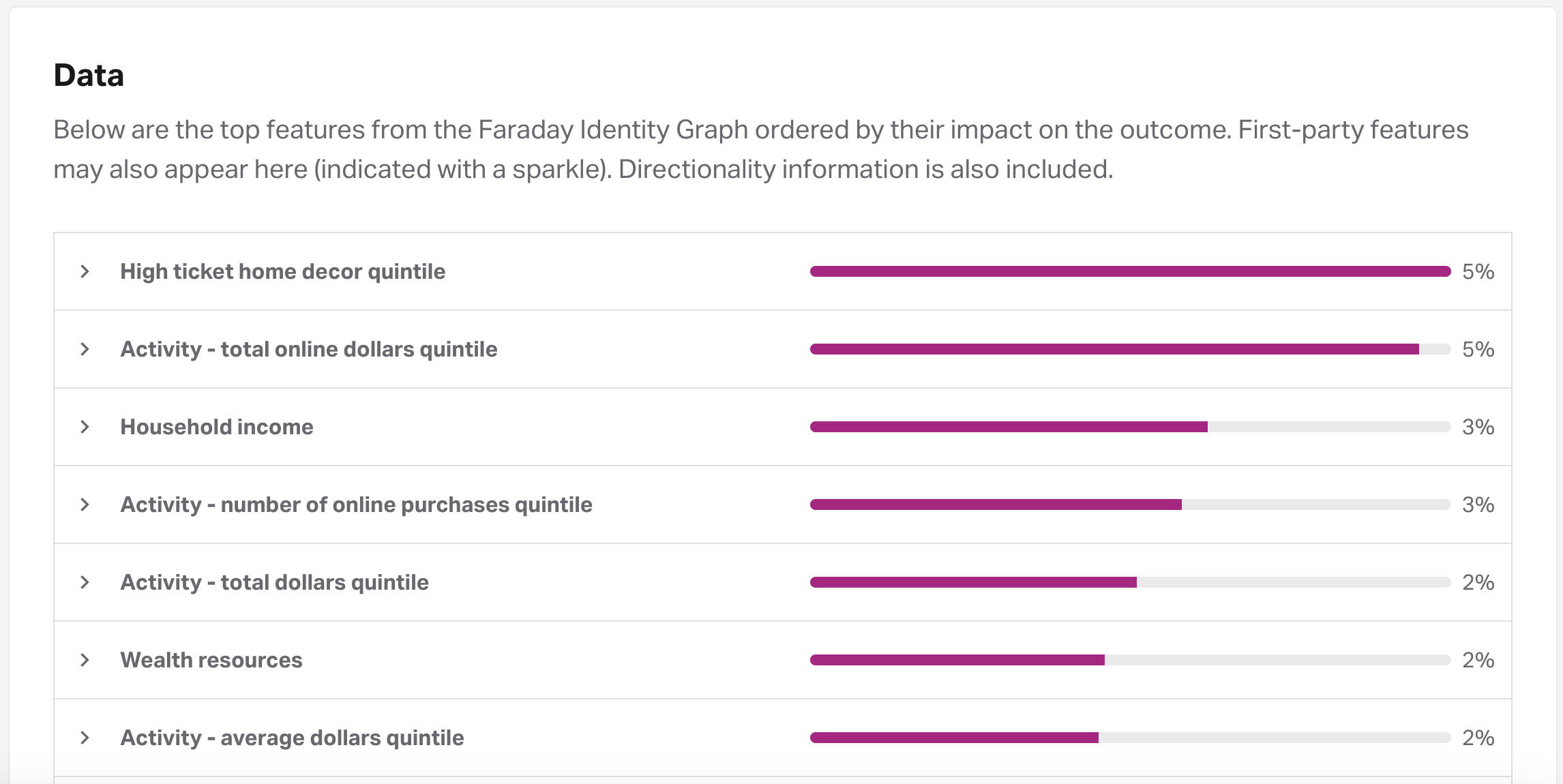
Note: the image above illustrates important features surfaced in Faraday model reports.
This takes the guesswork out of choosing lead scoring criteria for traditional point-based models. With the right lead scoring dataset, these models can predict a lead’s likelihood to convert before they ever visit your website or open an email.
How B2C companies use predictive lead scoring
Implementing the right predictive lead scoring system (one tailored for B2C lead scoring) unlocks powerful lead optimization and personalization options for marketing and sales teams.
-
Lead ranking and suppression: A simple yet powerful use case for predictive lead scoring. Rank your leads, set a suppression threshold (e.g. bottom 70%), and only surface the likeliest-to-convert leads in your outreach tools. This enables sales and call center reps to prioritize their outreach and improve win rates across the board.
-
Lead routing and distribution: A slightly more creative use case is to use predictive lead scores to tier your leads and distribute leads from the best tier to your best reps; a great way to maximize your win potential. One of the leading solar installers in the nation improved call center conversions by 33% with this approach.
-
Product recommendations: If your predictive lead scoring system supports product-specific modeling, you can predict which products or services a lead is most likely to purchase. These product-specific lead scores enable marketing and sales teams to make informed product recommendations across relevant touchpoints.
-
Customized discounts/promotions: Most predictive lead scoring models are built to predict the likelihood of a lead converting to a customer. Why not predict the likelihood of leads converting to high-LTV customers and offer custom discounts or incentives to the leads who are most likely to spend a lot? This is one of the most creative use cases we’ve seen.
Core components of predictive lead scoring for B2C
Predictive lead scoring requires robust data (first-party and third-party), customizable and explainable models, and flexible integrations to bring lead data into the system and push predictive lead scores out to your marketing and sales tools.
Historical lead data
Historical lead data provides the necessary foundation for building accurate predictive models. This first-party data includes information about past leads’ behaviors, attributes, and their outcomes (e.g., whether they converted into customers or not).
Lead enrichment data
Lead enrichment data is crucial for predictive lead scoring because it enhances models' accuracy and depth of understanding about leads. For B2C lead scoring, this third-party consumer data typically includes demographic information, financial information, lifestyle information, and property information.
Note: Given the changing data privacy landscape, it’s crucial that your predictive lead scoring system uses responsibly sourced consumer data. Avoid data from third-party cookies and social scraping.
Machine learning capabilities
There are several ways to leverage machine learning for predictive lead scoring, all with varying degrees of complexity.
Most CRMs and marketing automation platforms now offer built-in predictive scoring capabilities. These solutions typically leverage blackbox (unexplainable) machine learning and rely heavily, if not entirely, on the first-party you have in the system. They’re easy to implement, but lack third-party consumer data which is crucial for B2C lead scoring.
If you have data scientists and engineers with enough bandwidth to spare, you can try taking a homegrown approach. However, in-house development costs can be substantial so unless you already have machine learning pipelines and are licensing consumer data, we recommend using our API to score leads instead.
Predictive analytics and customer prediction platforms like Faraday operate somewhere in the middle, providing users with better control of their models while streamlining laborious machine learning processes. With Faraday, users connect their lead and customer data and tell the system what to predict (e.g. lead conversion likelihood). The system handles the rest (data enrichment, model building, score deployment, etc.). We’ll show you how to implement predictive lead scoring with Faraday later on.
System integrations
Integrations are necessary for predictive lead scoring to impact revenue. Predictive lead scoring systems need to ingest new lead and customer data to improve models and deploy predictive lead scores into your marketing and sales systems. Ensure that your system can connect flexibly with your data sources and marketing and sales platforms.
Fundamentals of a good B2C lead scoring dataset
For B2C companies, best-in-class predictive lead scoring requires a combination of historical data and third-party consumer data. Historical lead and customer data enables machine learning algorithms to distinguish successful outcomes (e.g. leads converting into paying customers) from unsuccessful outcomes. Consumer data lets the algorithm identify important “real life” characteristics about the leads that convert into customers versus those that don’t. For the best results, you will need the following data:
- Identity data (e.g. name, physical address, and phone number) is necessary to match your lead and customer records with the correct consumer profiles acquired from third-party data sources. This matching process is commonly referred to as identity resolution.
- Transactional data (e.g. lead acquisition date, purchase date, and order value) is necessary to define important cohorts like customers, leads, and stale leads. The machine learning algorithm will examine these cohorts to identify patterns that indicate the likelihood that an individual will move from the “leads” cohort to the “customers” cohort.
- Engagement data (e.g. pageviews, email subscriptions, and free trial signups) enables the algorithm to understand how certain behaviors contribute to a lead’s likelihood of conversion.
- Consumer data (e.g. demography, lifestyle, property, and financial information) enables the algorithm to understand how different human characteristics contribute to a lead’s likelihood of conversion. Here’s a small snapshot of Faraday’s built-in consumer data:
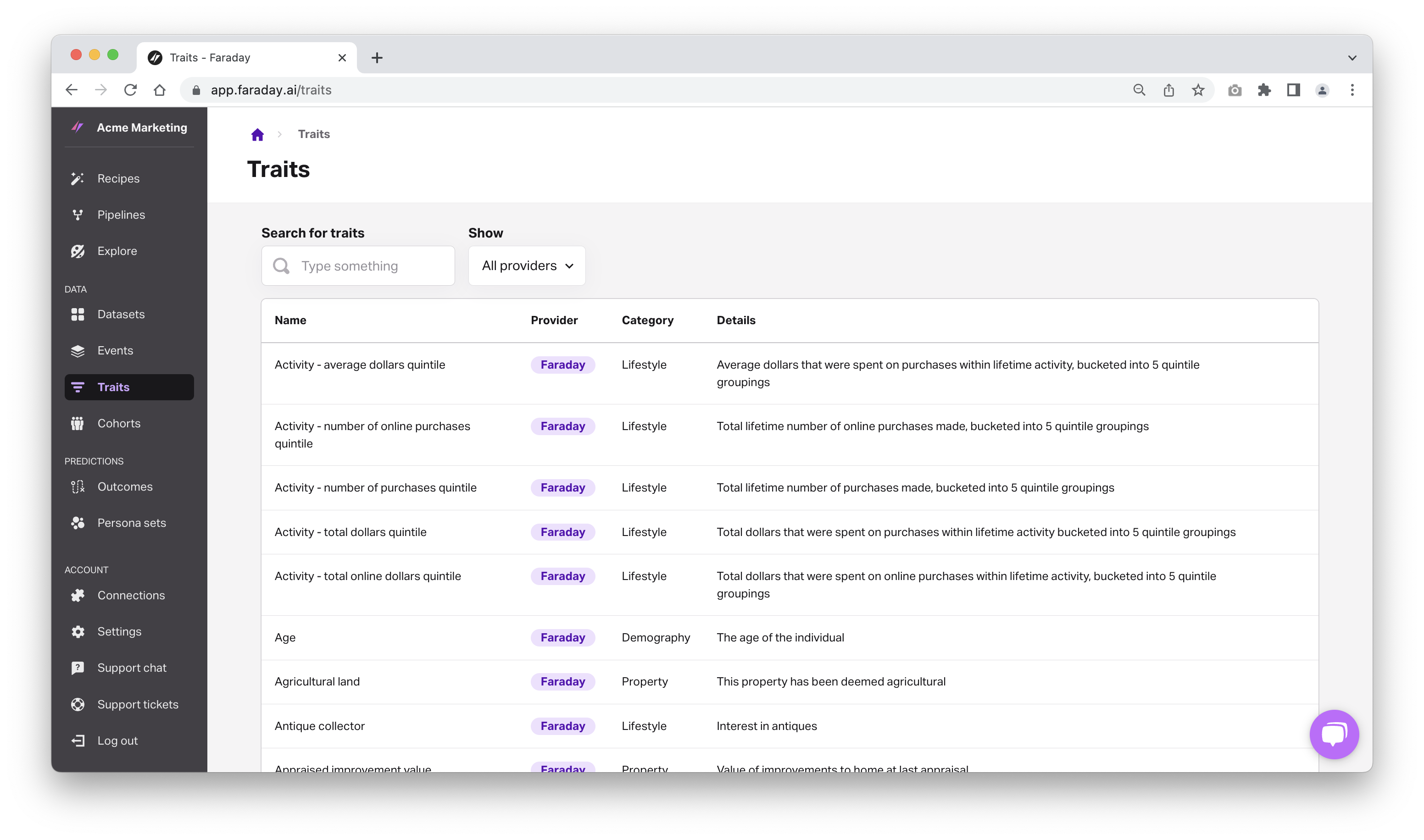
Now that you’re familiar with predictive lead scoring and what’s required to generate accurate B2C lead scores, we’ll show you how to set up predictive lead scoring pipelines with Faraday.
How to implement predictive lead scoring with Faraday
With Faraday, you can implement best-in-class predictive lead scoring within a day, without support from your dev team. To do this, you’ll simply upload your lead and customer data and use predictive lead scoring recipes to easily configure predictive models and deploy lead scores to your stack.
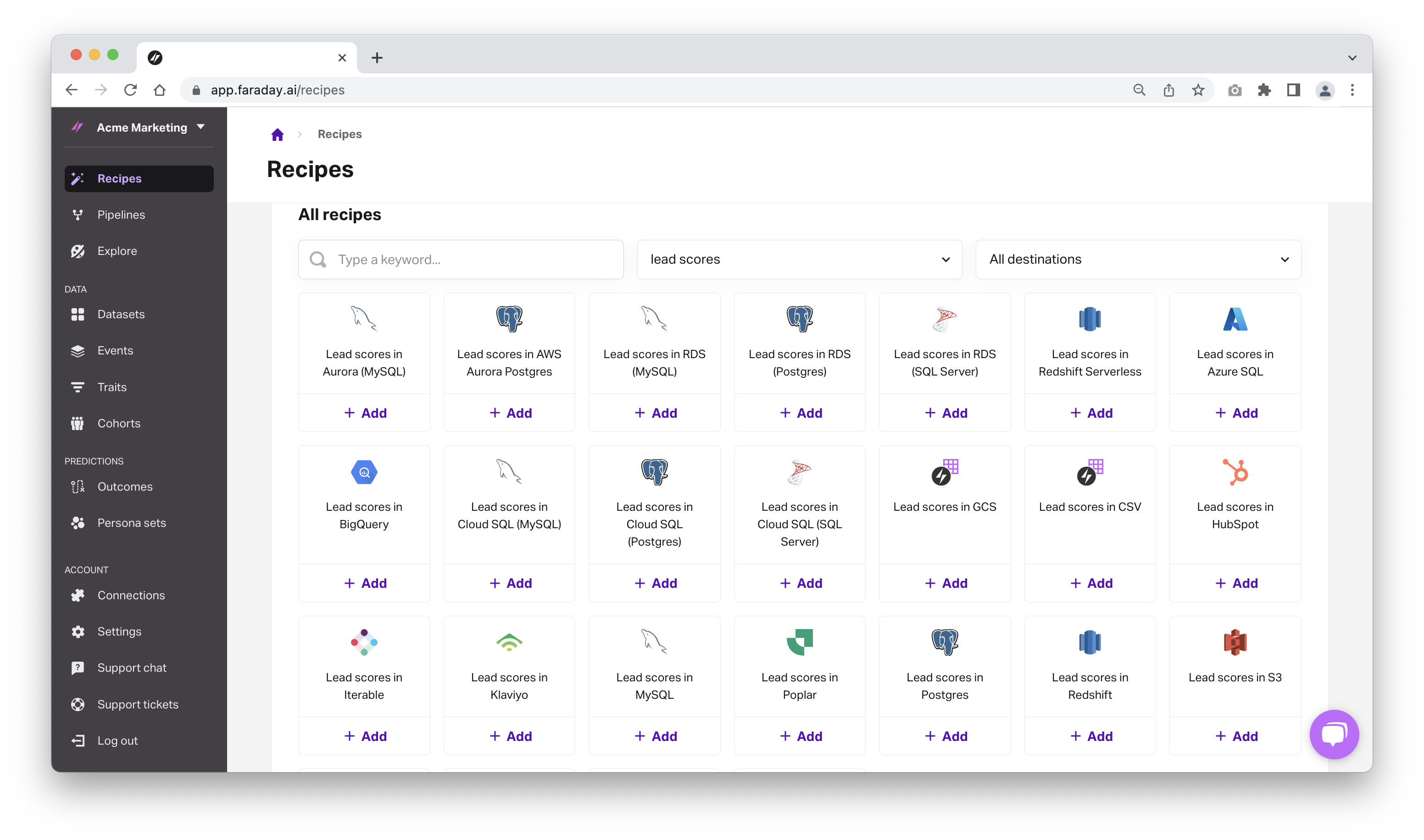
You can upload your historical lead and customer data with a CSV file or create a connection to your database or data warehouse. Faraday automatically enriches your data with built-in consumer data profiles, adding hundreds of attributes to your lead and customer records.
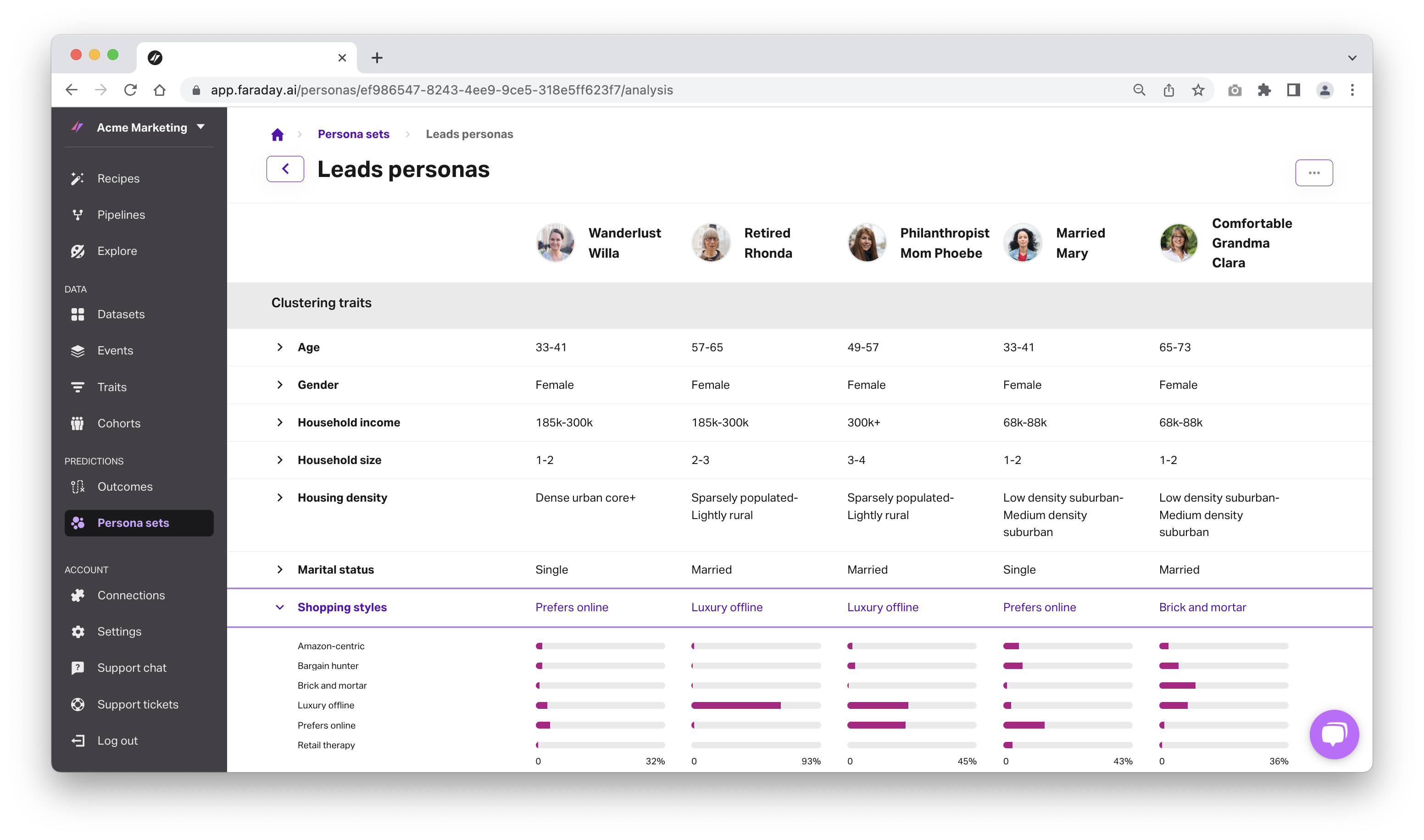
Once your data is in the system, just choose a lead scoring recipe, add your leads and customers, then hit save.
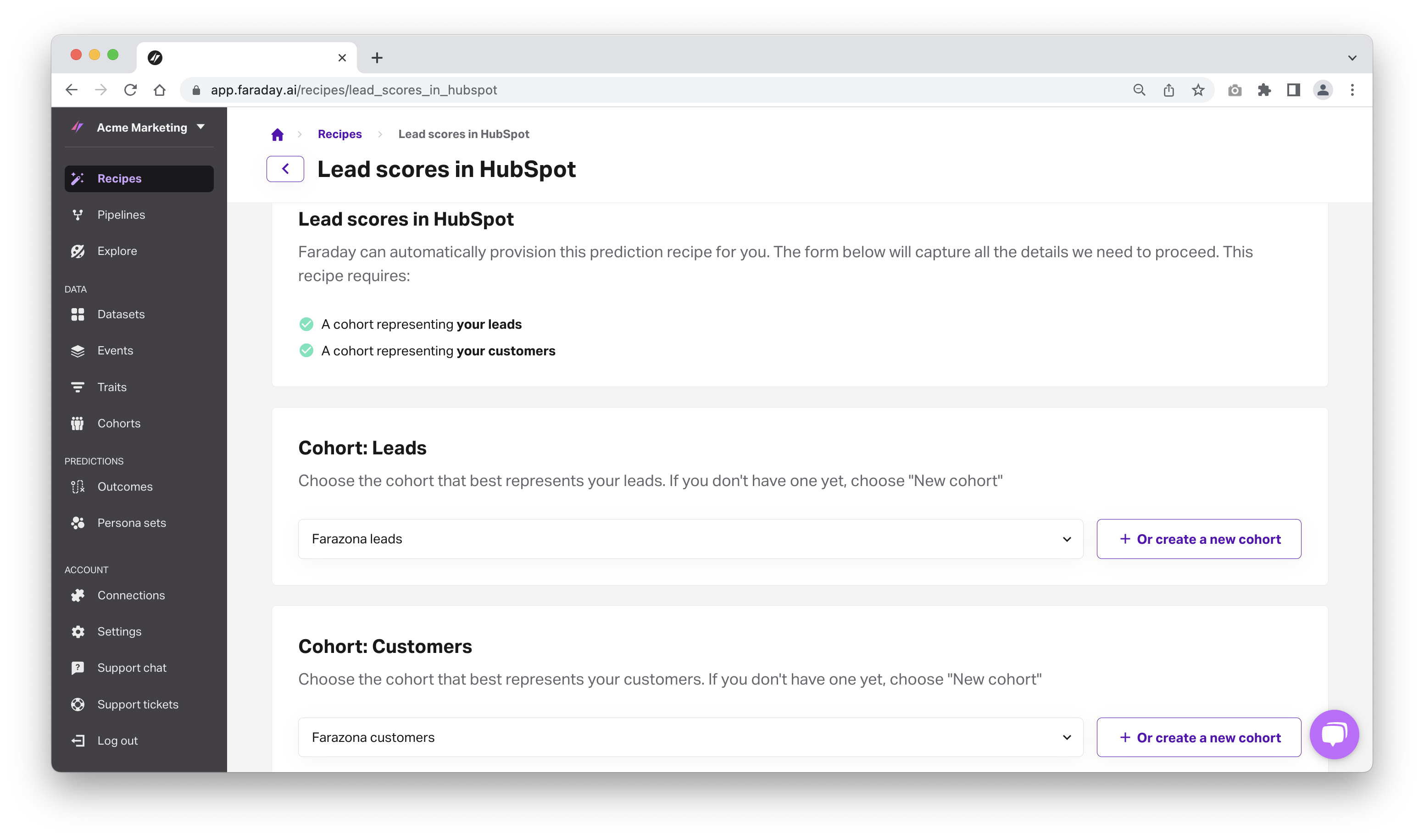
Faraday will automatically build predictive models and provide model performance insights to help you determine what kind of results you can expect.
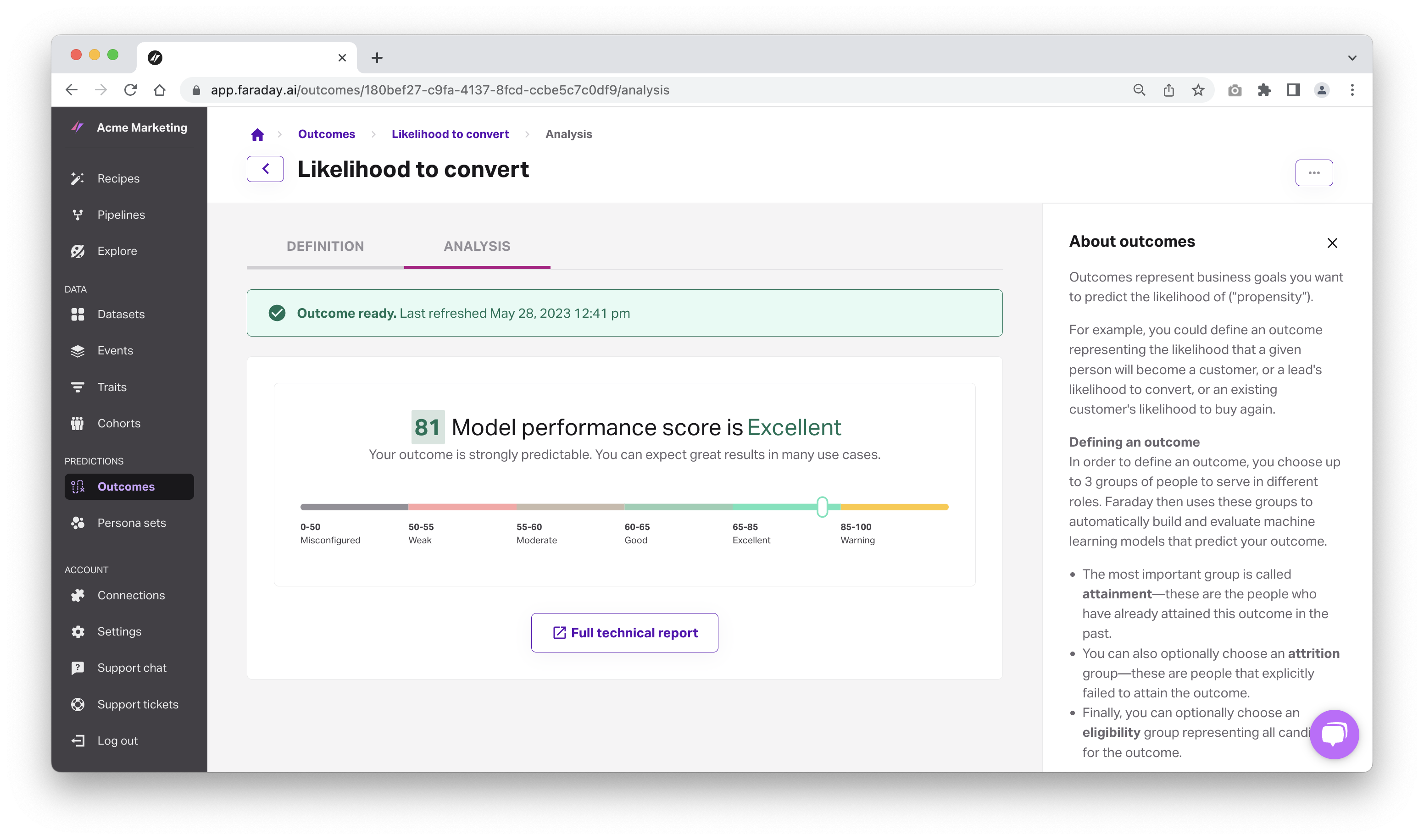
Once you’re satisfied with your predictive lead scoring models, add deployment destinations (e.g. HubSpot) to your pipeline and turn it on.
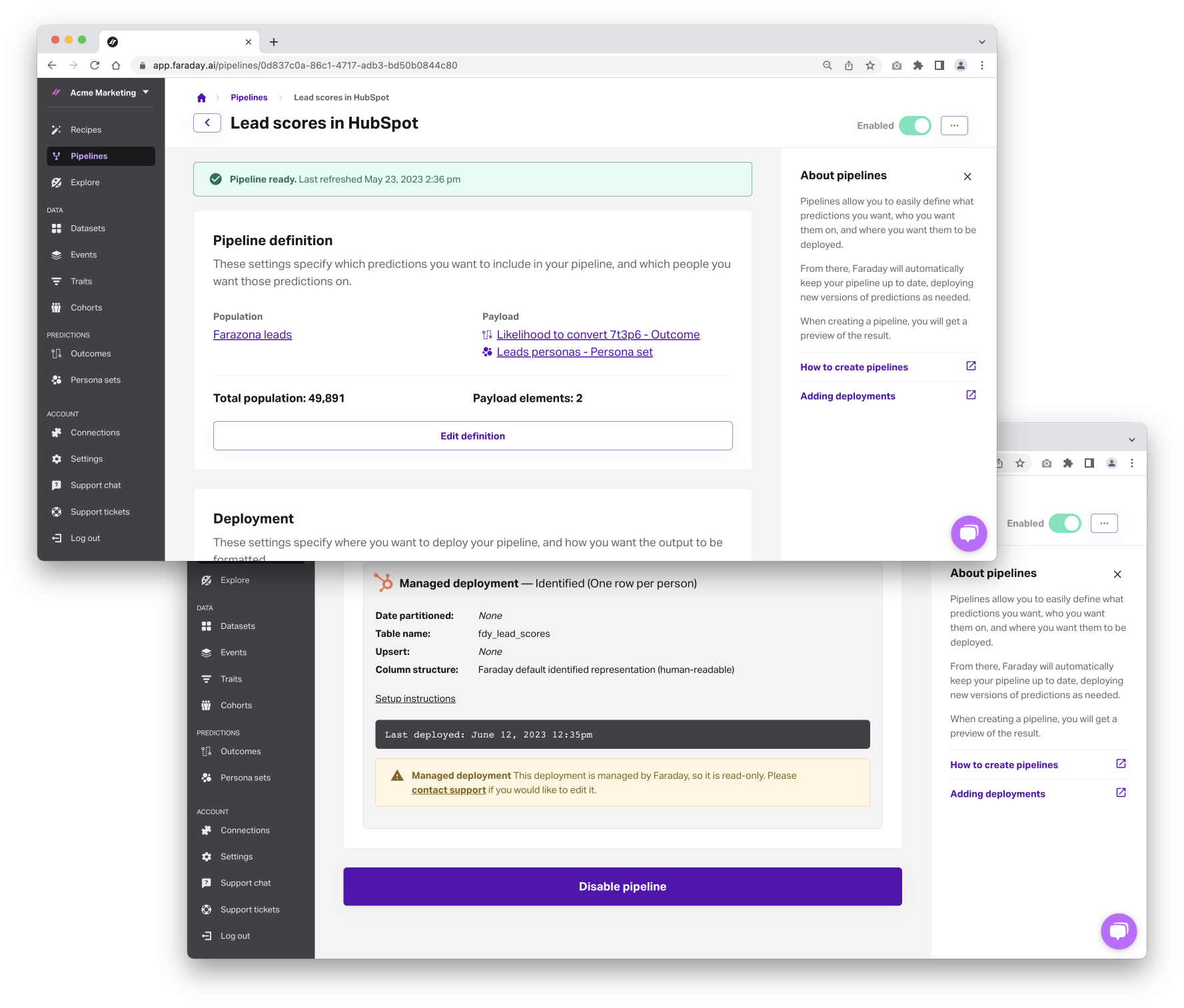
Just like that, you have predictive lead scores flowing into your stack.
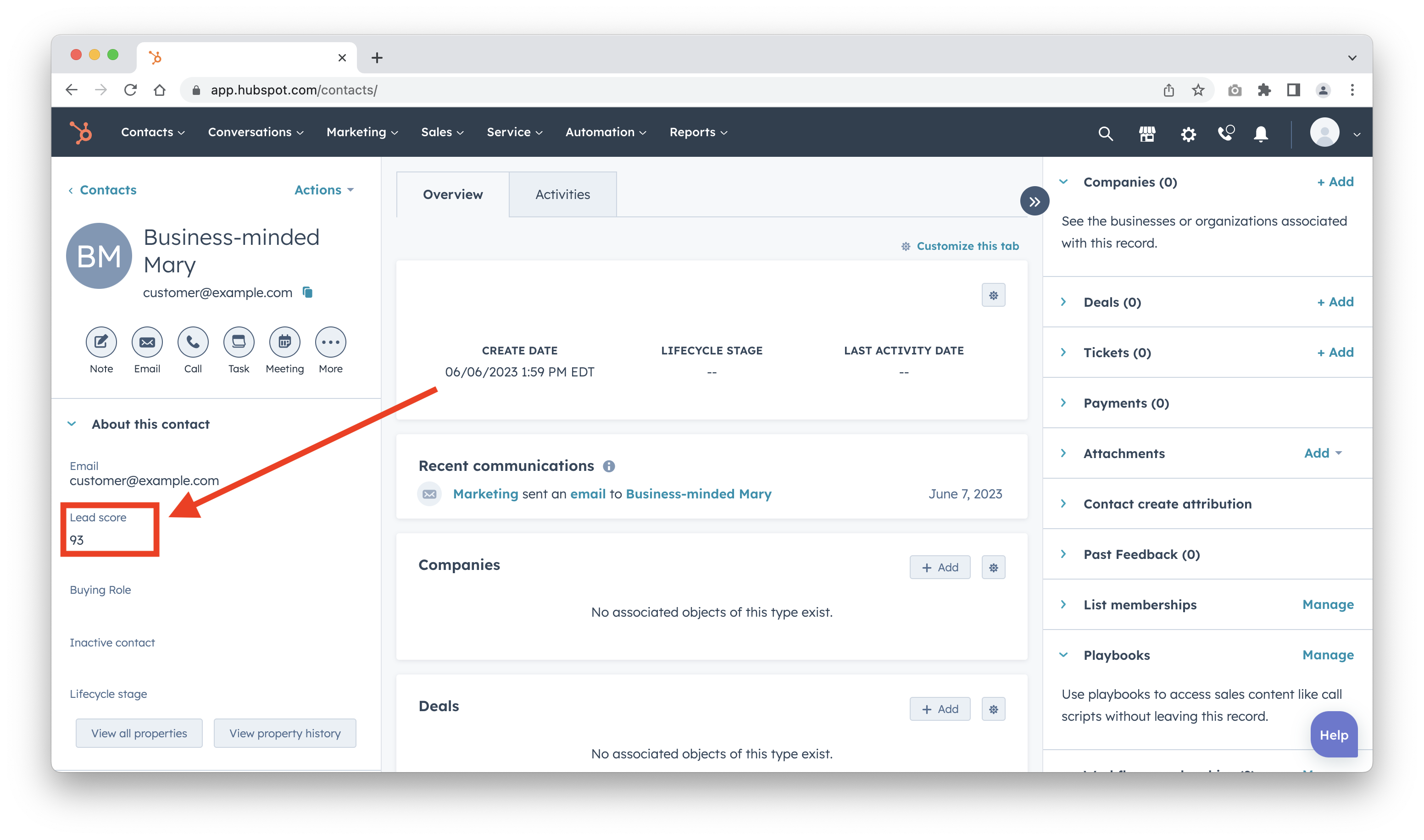
Ready to try it out? Create a free account.

Faraday
Faraday is a predictive data layer that helps brands and platforms understand who their customers are and what they’re likely to do next. We connect first-party data with privacy-safe U.S. consumer context from the Faraday Identity Graph and deliver production-ready predictions and datapoints you can activate across marketing, sales, and customer journeys.

Ready for easy AI?
Skip the ML struggle and focus on your downstream application. We have built-in demographic data so you can get started with just your PII.